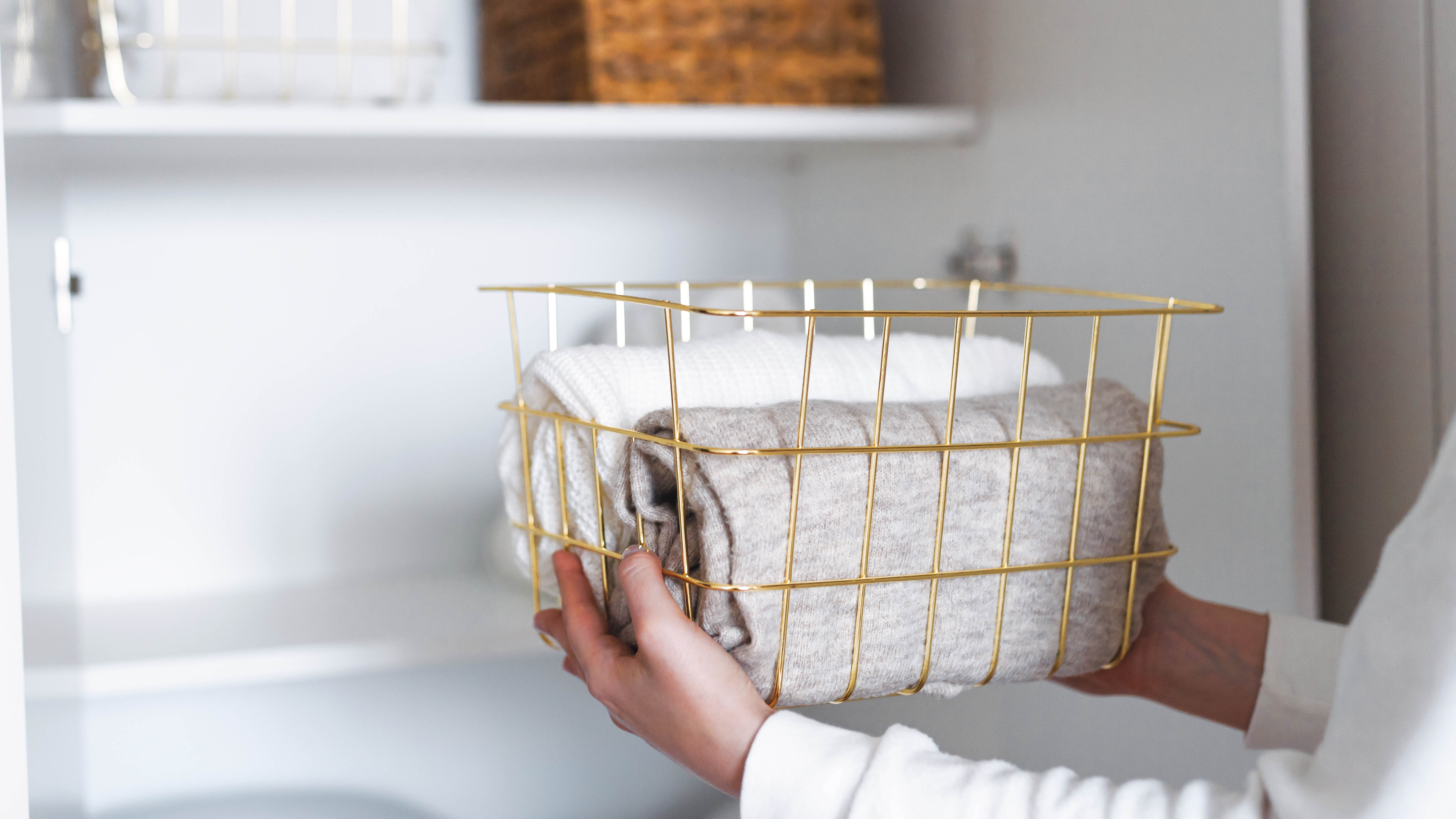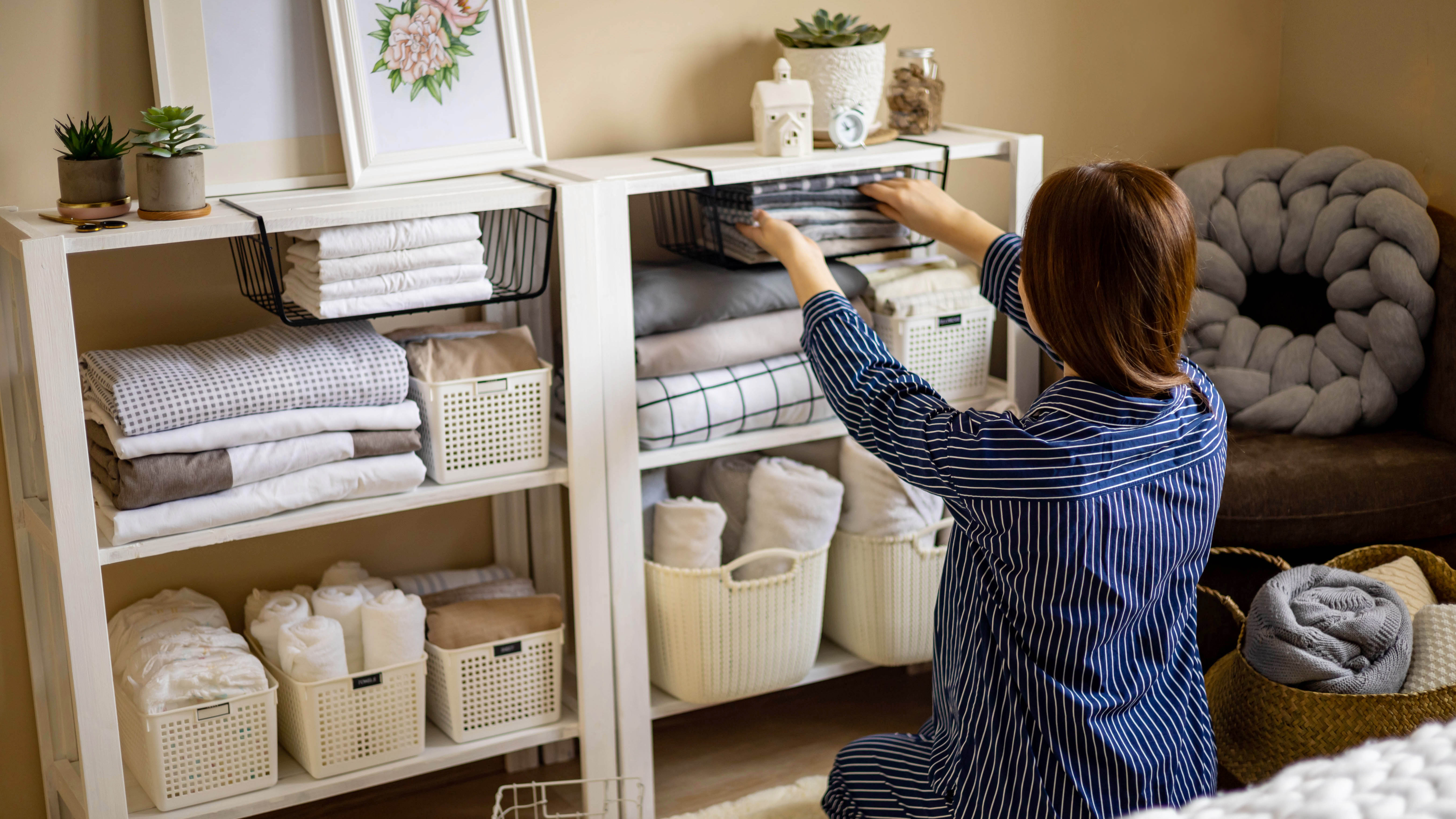5 best ways to declutter your home now
Here are 5 decluttering hacks to use around your home

No matter how clean we keep our homes, clutter always seems to build up. From junk mail, to empty packaging, to clothes we never wear, all sorts of miscellaneous items can accumulate over time, leaving our homes looking, well, cluttered. Decluttering is rarely an exciting prospect — it takes a lot of time and effort to restore some of that space. But, you can’t ignore it because things will only get worse.
Thankfully, there are methods and hacks you can try to make the chore a little easier. By implementing some of these and learning how to declutter your home, you can keep on top of the mess and make the process of removing it feel less arduous. If you’re keen to learn all about it, we’ve rounded up our 5 favorite techniques here to get you started https://www.tomsguide.com/home/how-to-create-a-show-home-aesthetic-7-interior-tips-to-try just make sure you avoid these 5 decluttering mistakes.
Find out what happened when our writer tried the Swedish death cleaning trend for a week. Plus, here are 7 clever ways to store baking sheets and 11 storage hacks to get your garage organized, 7 ways to declutter your kitchen like a minimalist and how to create a show home aesthetic — 7 interior tips to try. And did you know that decluttering you home is one way to make your home look expensive on a budget.
1. Ski slope method

This method was founded by Anita Yokota — a psychologist who turned her hand to interior design. It essentially involves “imagining your messy room like a ski slope” — starting from the corners and moving to the alternative side of the room as you declutter, breaking the task up into sections rather than tackling the whole thing at once.
It’s known as the ski slope method because you’re working your way gradually through the chore, decluttering from side-to-side, as you would traverse down a ski slope. In doing this, you save time as well as guarantee a thorough finish, with no corners missed. It makes the chore feel less overwhelming on the whole too. You can read all about it in her book Home Therapy ($17, Amazon).
Our Homes Editor, Cynthia Lawrence, tried out the method for herself — this 'ski slope' organization method changed the way I tidy my home.
2. Swedish death cleaning

Also known as döstädning, this method sounds a little morbid off the bat, and it admittedly is. Introduced by Margareta Magnusson in her 2017 book The Gentle Art of Swedish Death Cleaning ($15, Amazon), the idea stems from the concept of loved ones having to declutter what’s left behind after you die. A task which can often be overlooked.
Sign up to get the BEST of Tom's Guide direct to your inbox.
Get instant access to breaking news, the hottest reviews, great deals and helpful tips.
To lessen this burden, Swedish Death Cleaning involves removing everything except for items of great significance, so minimal possessions remain after you’ve gone. While designed to aid those in the final stages of life, it’s a relevant decluttering method at any age, particularly if you’re looking to make the most of your space. It involves sorting through your clothes, items which occupy the most space, followed by digital files. This overwhelming task doesn’t need to be tackled in a short space of time either — Swedish death cleaning can be implemented for an allotted time on a routine basis, to see results gradually.
According to Magnusson in Psychology Today: “Thirty minutes of death cleaning a day is a good starter. Work up to an hour a day. Reward yourself after every accomplishment: A nice coffee, a piece of cake, a warm shower, or a bath.” So you can divide up your home, and tackle each room and space individually, but remember to keep a stern mindset for the best results.
3. KonMari

Maybe one of the most famous decluttering techniques, the KonMari method had to make our list. Developed by Marie Kondo, it involves tackling ‘categories’ of items, rather than rooms in a specific order — namely clothes, followed by books, papers, miscellaneous and mementos. In doing this, you’ve got a visual of how many items you already have of this kind, so decluttering can feel a little easier. You also begin with items which generally have less sentimental value, which gets you off to a good start, ready to implement the method with more tricky items later on. When the chore gets difficult, she reminds to visualize the desired outcome.
As you face each item, you establish if there’s an emotional connection there — the question you need to ask yourself is does it spark joy in your life? If not, it’s time to thank and say goodbye to that item, detaching yourself from it and any reason you’re hanging onto it. In doing this, you will only keep items which are meaningful and still serve a purpose.
Once you’ve finished one category, discarding unwanted items before storing your keepsakes, you can move straight onto the next. Organizing your precious items back into storage is as much a part of this technique. It will take time to complete in full, requiring commitment throughout (one of the rules for this method), but once you’re there, it will be easier to keep things in check going forward. You can read all about the KonMari method in The Life-Changing Magic of Tidying Up ($8, Amazon).
4. 365 less things

If you prefer to break up the chore of decluttering, this could be the best method for you. As the name suggests, 365 less things involves getting rid of 365 items over the course of a year, selling, donating or throwing away one item each day. It’s a gradual method which takes little effort on a daily basis, but can produce impressive results in the long term.
Colleen Madsen came up with this idea back in 2010 as a New Year’s resolution and has since inspired many more to follow suit. In her blog, She recalls “I could turn a project I had already begun, which was to get rid of some unutilised items in my house, into a 365 day resolution to declutter every wardrobe, bench, shelf, under bed, pantry and garage space in my home by giving away, throwing away or selling one item everyday for the next twelve months.” If you want to see the results of her efforts, check out 365 less things — there’s tips and guidance here on perishables and sustainable living. Plus, recycling and donating options.
5. The reverse hanger hack

While it’s not an established decluttering method, I recommend focusing on one area to declutter on a routine basis. With limited time in the evenings and weekends, I can’t take on huge decluttering projects, but by setting myself a small task every week, after I’ve finished the usual chores, I feel like I’m slowly making progress. For instance, one weekend I might organize the cutlery drawer, or on another I may tackle the bathroom cabinet. It’s up to you how you declutter at the end of the day!
A great way to sort the clothes in your closet is by trying out the reverse hanger hack. This was created by Anita Birgess, decluttering expert and founder of Mise en Place. It involves reversing all your hangers to face the wrong direction in your wardrobe, and then rotating them as and when they’re used to face the right way. By the time six months has elapsed, you can see what items you tend to wear, helping you decide what needs to be donated or recycled. This technique can come in handy year-on-year to declutter your wardrobe.
If you want to save more space in your wardrobe, we recommend switching to velvet hangers. These are generally thinner versus plastic and wood, plus they hold delicate clothing more appropriately and provide grip to stop items from falling to the floor. An example would be these HOUSE DAY Black Velvet Hangers 60 Pack ($29, Amazon).
More from Tom's Guide

Katie Mortram used to be a Homes Editor for Tom's Guide, where she oversaw everything from kitchen appliances to gardening tools, as well as smart home tech. Specializing in providing expert advice for cleaning and home manintenance, she now works as Household Advice Editor for Good Housekeeping.
